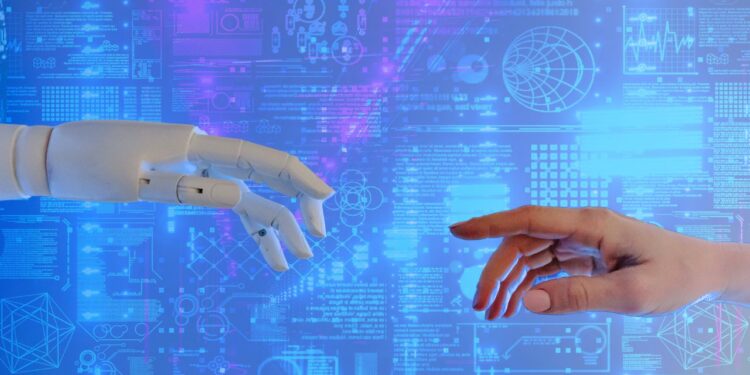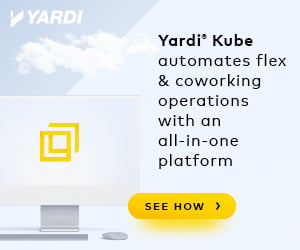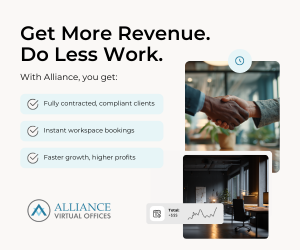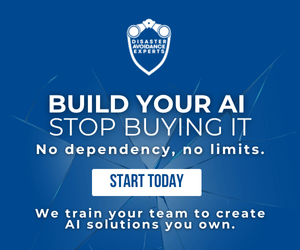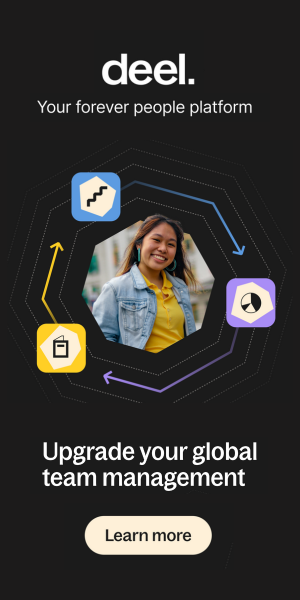- AI shouldn’t replace us but instead be used as a tool, and its value depends on how we choose to use it, not on the hype or fear around it.
- In a world of smart machines, human uniqueness, authenticity, and creativity are what truly stand out.
- Intelligence is now abundant — so the future of work belongs to those who lead with judgment, empathy, and purpose.
This article is based on the Allwork.Space Future of Work Podcast episode featuring Ram Srinivasan — Executive Management Consultant, AI strategist, and AI Adoption Leader at JLL. Click here to listen to the full episode.
In AI-focused conversations, it’s easy to default to extremes: automation panic or tech utopia predictions.
But according to Ram Srinivasan — Executive Management Consultant, AI strategist at JLL, and author of The Conscious Machine — both viewpoints miss the point.
AI is not the enemy of work or the hero of it, but rather a new tool. And like any powerful tool, its impact depends entirely on how we choose to use it.
In a recent episode of The Future of Work® Podcast, Srinivasan offered something rare in the current dialogue surrounding AI: clarity, calm, and a deeply human lens on a technological revolution.
“Technology should be used to augment human potential and not to replace it,” Srinivasan said.
From Hype to Reality: Getting Clear on What AI Is (And Isn’t)
Srinivasan dismantled three common misconceptions. First, that AI is mostly hype and isn’t usable today. Second, that you need to be a coder to use it effectively. And third, that generative AI is just another passing tech phase.
In fact, he argues, AI is already woven into our daily lives — from social media algorithms to GPS. The current boom in generative AI, he says, represents a powerful new category: general-purpose work tools, like Excel or PowerPoint, with limitless potential based on how we choose to apply them.
“You right now have 1,000 PhDs in your pocket,” he said. “The question is, how do you use them?”
The Cost of Convenience: Is AI Making Us Average?
While AI can accelerate output, Srinivasan raises a critical concern: it can also flatten individuality. Tools that autocomplete your code or generate marketing copy in seconds may be efficient — but they’re also pulling from the same datasets and patterns.
The danger? A world where everyone sounds the same.
“We all begin to resemble each other and are exact replicas of each other. We are the average,” he warns. “Where the value and the spirit of humanity comes in is the uniqueness that each one of us brings to the table.”
That uniqueness is now the differentiator. In a society where AI can draft, design, and generate, the work that stands out will be the work infused with a personal voice, lived experience, and authentic perspective.
Welcome to the Decade of Authenticity
Srinivasan believes we’re entering a period where being real will matter more than being fast.
With AI models saturating content platforms, audiences are growing increasingly skilled at spotting formulaic writing. In turn, the value of genuine human expression — storytelling, emotional nuance, creative risk-taking — is rising.
“This year and the next decade is going to be the decade of authenticity,” he said. “We need to really think about what our authentic experience is and figure out a way to convey it.”
This doesn’t mean avoiding AI, but using it wisely as a collaborator, and not a crutch. It means being intentional about what you delegate to machines and what you keep human.
The Real Challenge: Rethinking Work When Intelligence Is Everywhere
Perhaps Srinivasan’s most provocative insight is this: we’re not prepared for a world where intelligence is no longer scarce. With generative AI, every organization now has access to tools with a cognitive capacity that rivals expert-level IQ.
“What organizations, many executives are not prepared for is intelligence abundance,” he explained. “We are not thinking of businesses, processes, and our work in a world where intelligence is ubiquitous and virtually free.”
If AI can write your email and summarize your meeting notes — and your colleague’s AI can reply and summarize your reply — what’s the point of the email? When the process becomes automated end-to-end, the value lies in what isn’t automated: judgment, values, creativity, and vision.
This is why Srinivasan emphasizes the importance of starting with business problems, not with tools. Leaders need to understand why they’re implementing AI, not just how. Otherwise, we risk optimizing systems that no longer serve any meaningful purpose.
What Comes Next: Embracing Human Intelligence in an AI Age
The future of work, Srinivasan argues, will reward those who double down on their humanity. Skills like critical thinking, adaptability, empathy, and communication — often dismissed as “soft” — are quickly becoming essential.
At the same time, generational collaboration will play a key role. Younger workers often understand new tools intuitively, while seasoned professionals bring the experience needed to evaluate those tools effectively.
Reverse mentoring and cross-generational teams, he said, are a powerful formula for navigating this new era.
Srinivasan’s perspective reminds us that while technology changes fast, the core of work remains the same: solving problems, creating value, and connecting with others in meaningful ways.
And in a world of intelligence abundance, the one thing AI can’t replicate is you.


 Dr. Gleb Tsipursky – The Office Whisperer
Dr. Gleb Tsipursky – The Office Whisperer Nirit Cohen – WorkFutures
Nirit Cohen – WorkFutures Angela Howard – Culture Expert
Angela Howard – Culture Expert Drew Jones – Design & Innovation
Drew Jones – Design & Innovation Jonathan Price – CRE & Flex Expert
Jonathan Price – CRE & Flex Expert
